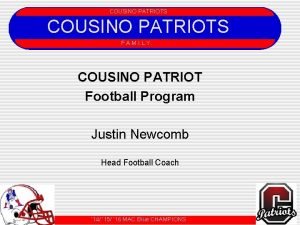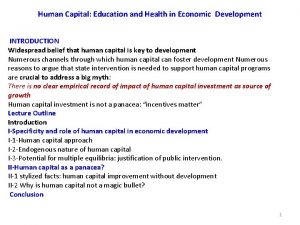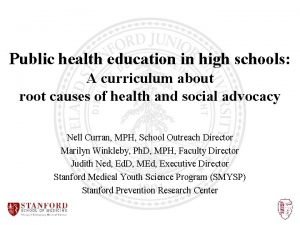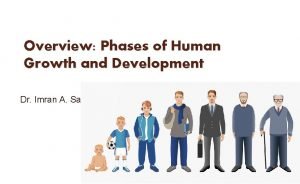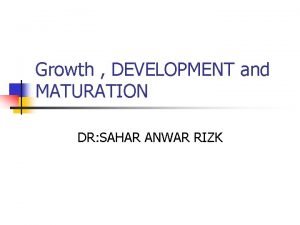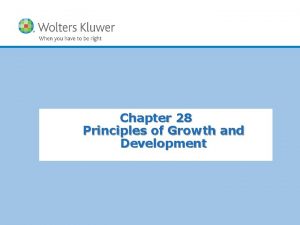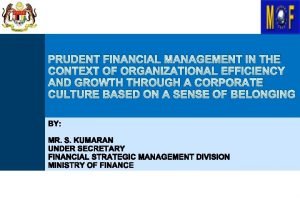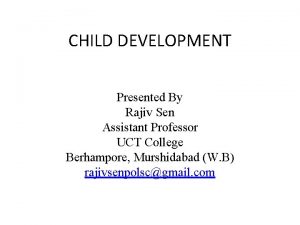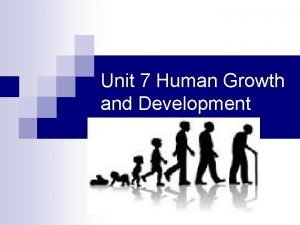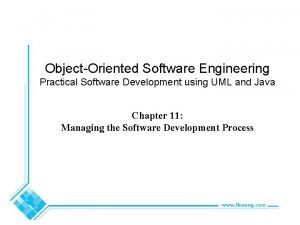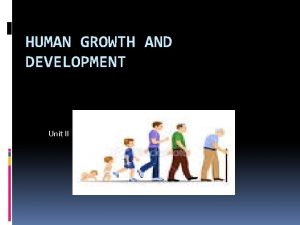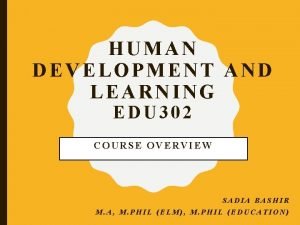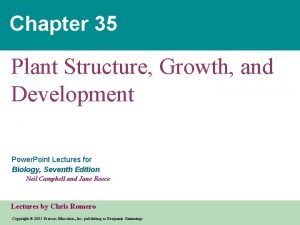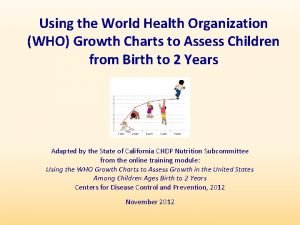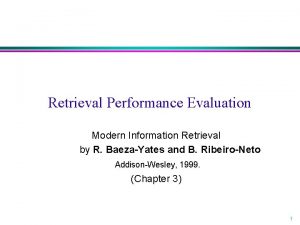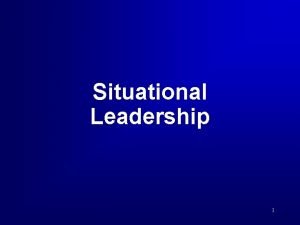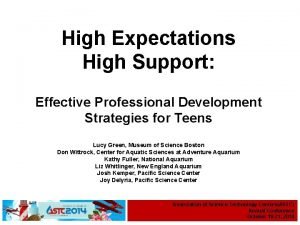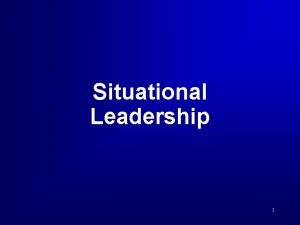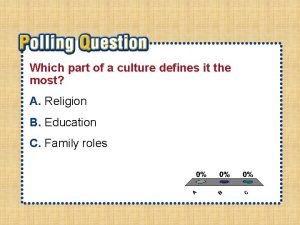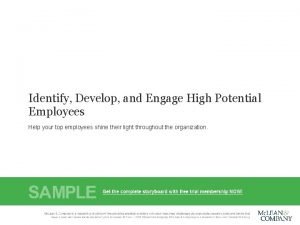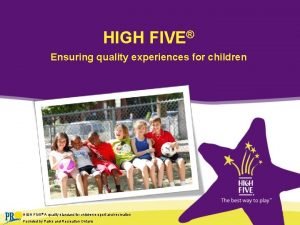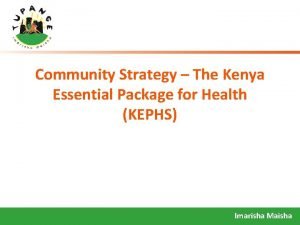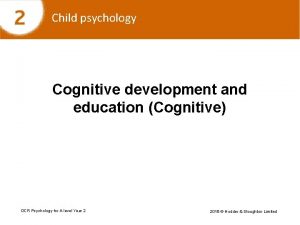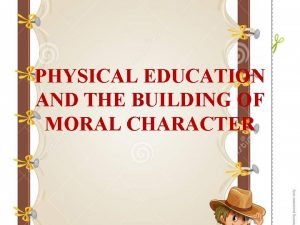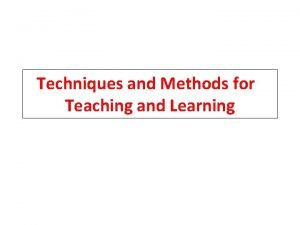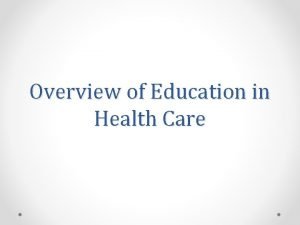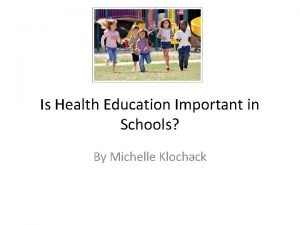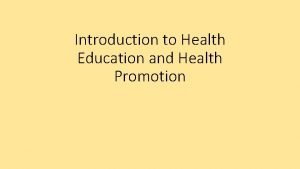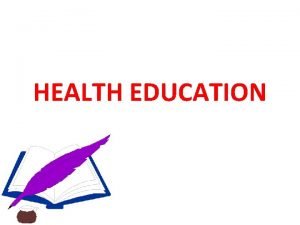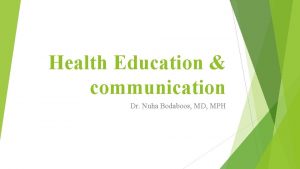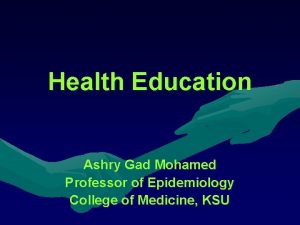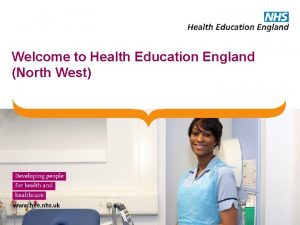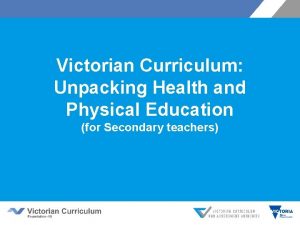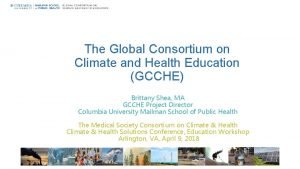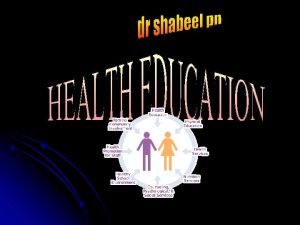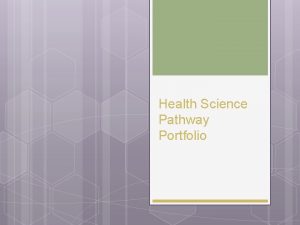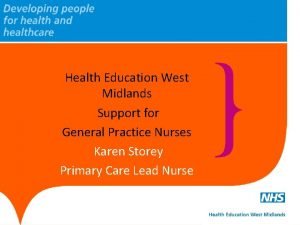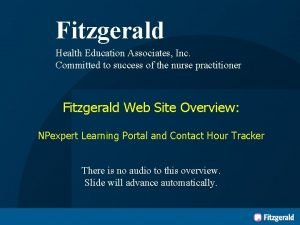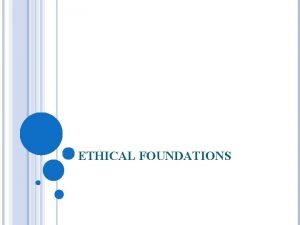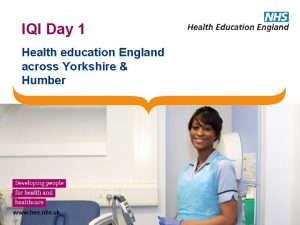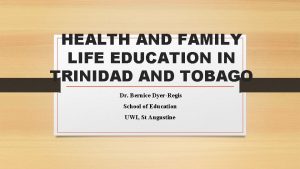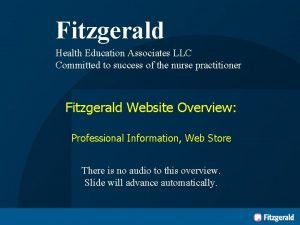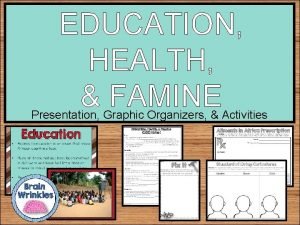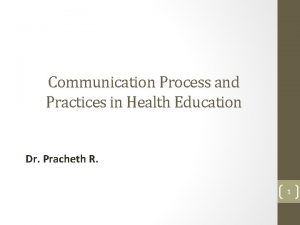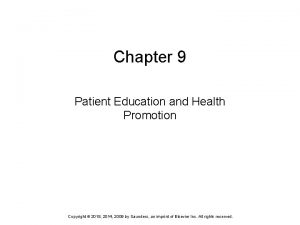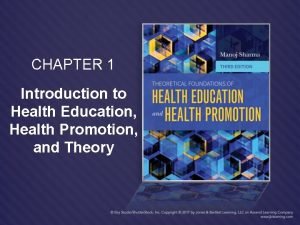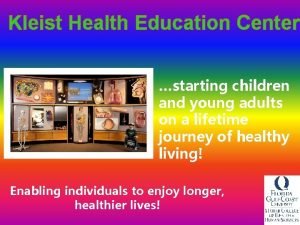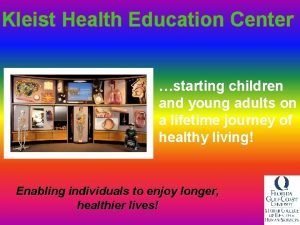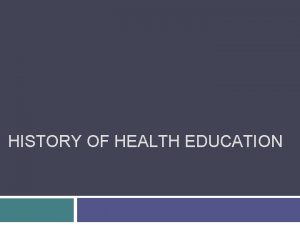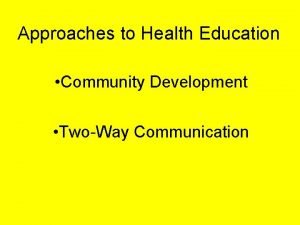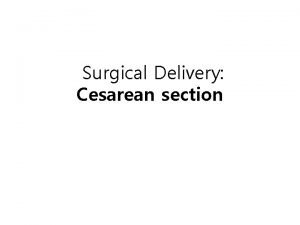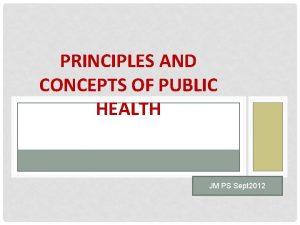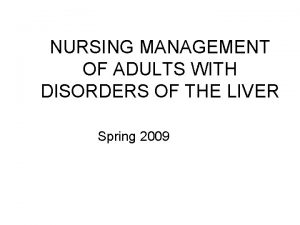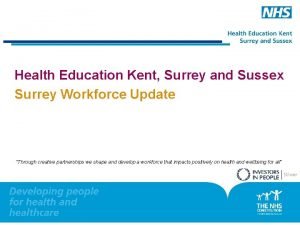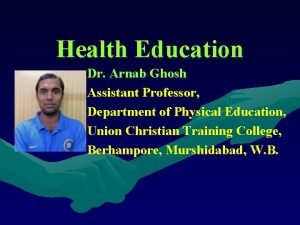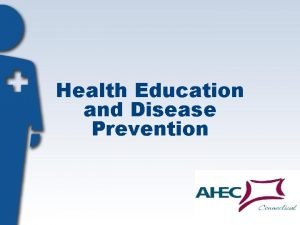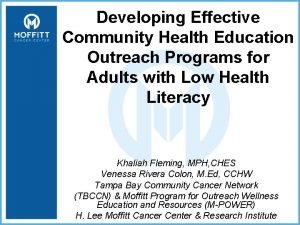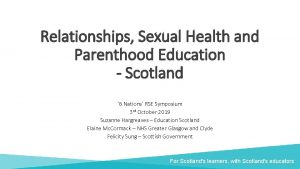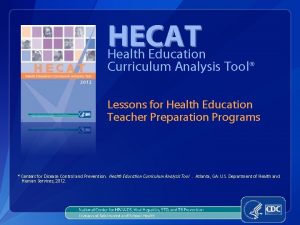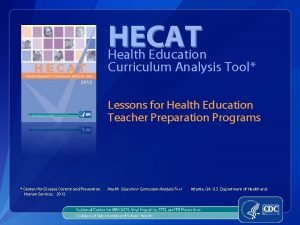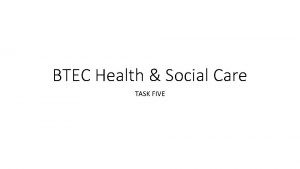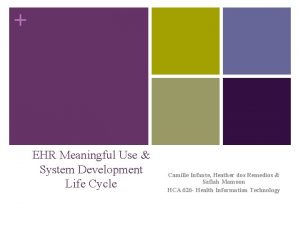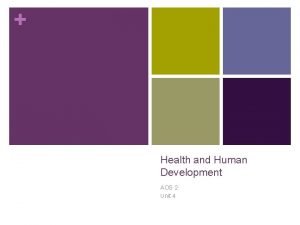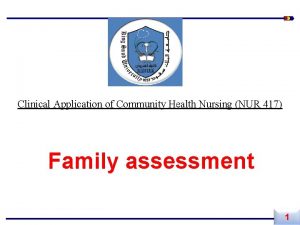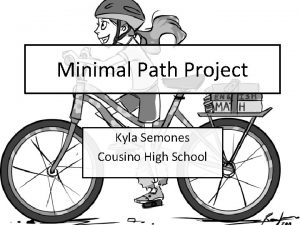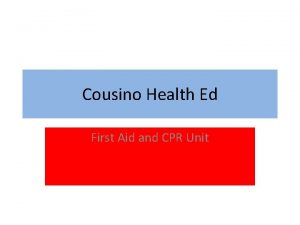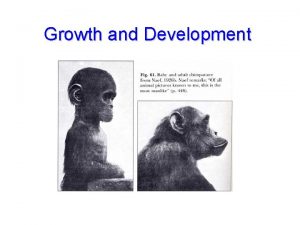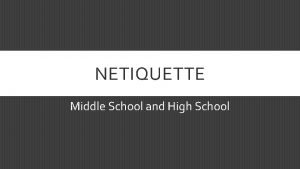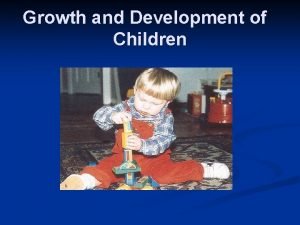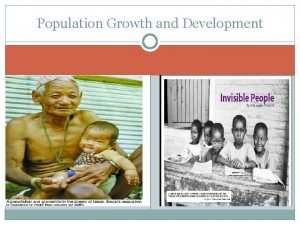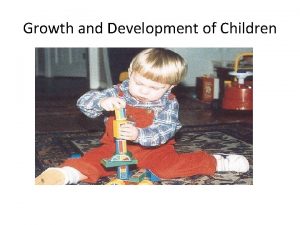Cousino High School Health Education Growth Development 1

































































































































- Slides: 129

Cousino High School Health Education Growth & Development 1

Bell Ringer #1 -Textbook: Read & Discuss n Read Pages: q q q Examining Dating & Friendships, pg 158 Initiating Friendships, pg 159 Dating Guidelines, pg 160 -161 Dating Skills, pg 162 -163 Balanced Friendships, pg 164 2

Relationships & Dating n n A balanced relationship that promotes mutual respect and healthful behavior is a Healthy Friendship. Having balanced friendships improves the quality of your life. 3

Relationships & Dating n Questions to ask yourself before beginning a friendship: q What do I know about this person? q Does this person have good character? q Do my parents know this person? q Will they approve of me spending time with this person? 4

Relationships & Dating n n How to start a relationship: Having a conversation and/or enjoying a social activity. Usually developing the relationship depends on your ability to carry on a conversation. A conversation is a verbal exchange of feelings, thoughts, ideas and opinions. 5

Relationships & Dating n Conversation Keepers q Asking Questions. q Showing interest in what someone else is saying. q Listening carefully. q Responding to others. q Considering other ideas. q Encouraging another person. q Being positive. q Making eye contact. n Conversation Killers q Talking only about yourself. q Not listening to what the person is saying. q Interrupting someone. q Changing the topic. q Being a “know-it-all”. q Complaining q Talking negative about others. q Not making eye contact. 6

Relationships & Dating n n n Having a positive Self-Concept, Self-Esteem and Self. Confidence is important when developing relationships. Self-Concept is the ideas a person has about himself/herself. Self-Esteem is how one feels about themselves. Self-Confidence is believing in one-self because of prior accomplishment. (Visualization, Modeling etc. ) If one has negative ideas & feelings and no selfconfidence in themselves then it is going to be hard for someone else to like them. You first must learn to like and accept yourself before anyone else can. 7

Relationships & Dating n n n n The key to maintaining a healthy relationship is communication!!! Communication is a process through which you send messages to and receive messages from others. There are four major components of Communication: 1. 2. 3. 4. Speaking Listening Body Language Written Word 8

Relationships & Dating n Assertiveness goes hand in hand with effective communication. n Assertiveness is telling someone exactly how you feel, not worrying about what they will say and not being indecisive. 9

Relationships & Dating Handling Rejection n Has someone you liked ever ignored you or failed to include you? n Rejection is the feeling of being unwelcome or unwanted. n 10

Relationships & Dating n There are healthful ways of expressing your disappointment such as sharing your feeling with that person or someone close to you. n Lastly, remember that you are someone important, even when a person does not want to have a relationship with you. 11

Review n Define a healthy friendship q n What do healthy relationships do? q n n Speaking, listening, writing, body language ______ is telling someone exactly how you feel q n Communication What are the major components of communication? q n Conversation ______ is the process through which you send & receive messages q n Add quality to life Revew: define self-concept, self-esteem, & self-confidence A ______is a verbal exchange of feelings, thoughts, ideas, & opinions q n a balanced relationship that promotes mutual respect Assertiveness ______ is the feeling of being unwelcome or unwanted q Rejection 12

Growth & Development Unit Assignment #1 Study Guide pg 165 -Questions: 10, 11, 16, 19, 24 13

Bell Ringer #2 -Textbook: Read & Discuss n Read Pages: q q Recognizing Harmful Relationships, pg 178 Harmful Relationships, pg 179 -181 Involvement in Harmful Relationships, pg 182 -183 Changing Harmful Relationships, pg 184 14

Relationships & Dating When to start dating? ? ? n Teens who begin dating before the age of 15 may base their identity on their dating experiences rather than on developing their unique personality. n Have you developed your personality yet or are just basing who you are off of who you have been dating? n 15

Relationships & Dating n n Research shows that teen who begin dating at a young age are more at risk of becoming sexually active. This increases their risk of becoming a teen parent and being infected with HIV or other sexually transmitted diseases. 16

Growth & Development Abuse is the intentional injury of one person by another n Physical n Emotional n Sexual n Verbal. 17

You might be in an abusive relationship if… n n n You are afraid of your partner when he or she is angry You are afraid to disagree You are constantly apologizing for your partners behavior You have to justify everything you do to avoid anger. Your partner puts you down and then tells you he or she loves you. 18

You might be in an abusive relationship if… n n You have been hit, kicked, shoved, or had things thrown at you Your partner keeps you from seeing your friends or family You have been forced or coerced to have sex or engage in sexual activities that make you feel uncomfortable and that you didn’t want to do. You are afraid to break up with your partner because he or she has threatened to hurt you, him/herself, other friends and family, or pets 19

Someone you know might be in an abusive relationship if you notice… He or she is missing school and/or withdrawing from activities n His or her grades fall. n 20

Someone you know might be in an abusive relationship if you notice… n n n His or her moods change. He or she might be depressed, withdraw from friends and family, act out, be secretive, seem insecure and put themselves down, seem unable to make independent decisions. He or she starts to wear baggy clothes or clothes which cover most of his or her body. He or she has signs of injury, such as bruises, cuts, broken bones. 21

You might be an abuser if… n n n You constantly check up on your partner. You feel like you cant be away from your partner. You are extremely jealous or possessive You have an explosive temper You hit, kick, shove, or throw things at others 22

You might be an abuser if… You constantly criticize or insult your partner n You have threatened your partner n You damage things when you and your partner are together n You have forced or coerced your partner to have sex n You have threatened to hurt your partner or someone else n You have threatened to hurt yourself if your partner breaks up with you. n 23

Growth & Development Phases of an Abusive Relationship Tension builds: the abuser becomes edgy and tense. He or she seems easily irritated. Their partner may feel scared or nervous and try harder to keep the abuser happy 24

Growth & Development Phases of an Abusive Relationship Explosion the abuser becomes more aggressive and verbally and/or physically attacks his or her partner. The partner may feel like he or she deserved the abuse and will most likely try to cover it up. 25

Growth & Development Phases of an Abusive Relationship The Honeymoon: the abuser tried to keep the relationship together. He or she promises to change and says it won’t happen again. The abuser can be apologetic, passionate, and often romantic. Over time this stage may disappear. (Temporary lessening of abuse) 26

Growth & Development How to Avoid Abuse: 3 R’s n Recognize: learn to recognize abusive behavior in its many forms n Resist: should someone use or try to use offensive touching, suggestive talk, or inappropriate behavior, resist in any way you can be assertive n Report: get away and tell someone. 27

Review n _______ is the intentional injury of one person by another. q n What are the 4 types of abuse q n n Physical, Emotional, Sexual, Verbal Is a girlfriend keeping their boyfriend from their family and friends abuse? q n Abuse YES! List other examples of abuse What are the 3 phases of an abusive relationship q 1 -Tension Builds 2 -Explosion 3 -Honeymoon 28

Growth & Development Unit Assignment #2 Relationships & Dating n Make a list of 5 characteristics that you look for in a potential boyfriend or girlfriend. n n Rank them from 1 -5 (1 being the most important) We should strive to have a balance of both. 29

Bell Ringer #3 -Textbook: Read & Discuss n Read Pages: q q q Practicing Abstinence from Sex, pg 166 Setting Limits, pg 167 Abstinence, pg 168 -169 Saying No, pg 170 -171 Resisting Peer Pressure, pg 172 -173 Changing Behavior, pg 174 -175 30

Avoiding Risky Situations A Risk Behavior is an action a person chooses that threatens health and can cause disease, injury and premature death. n A Risk Situation is circumstance or place that one puts/finds themselves in that threatens health and can cause disease, injury and premature death. n 31

Avoiding Risky Situations n Some action strategies you can use to help avoid a risky sexual situation are: q Think ahead q Act before the risky situation occurs q Communicate your expectations 32

Avoiding Risky Situations n Some action strategies you can use to help avoid a risky sexual situation are (continued): q q q q Listen respectfully Be firm Don’t back down Go out with another couple or group of friends Do not use alcohol or other drugs Have several ideas in mind for other things to do Keep your curfew Make sure your body language matches your words 33

Avoiding Risky Situations n What to say to set limits when dealing with risky sexual situations: q Tell the person what you’ve decided and, if you want to tell why. q Make a specific request q If the person says “no”, you could ask why or accept the answer and leave the situation 34

Avoiding Risky Situations n What to say to set limits when dealing with risky sexual situations (continued): q Restate the decision q Try another way to solve the problem, but do not change your decision q Restate your decision, if you choose, leave the door open. 35

Review n A______ is an action a person chooses that threatens health and can cause disease, injury and premature death. q n A ______ is circumstance or place that one puts/finds themselves in that threatens health and can cause disease, injury and premature death. q n n Risk Behavior Risk Situation List an actions strategies that you will use to avoid risky situations Describe a way you will set limits when it comes to risky situations 36

Growth & Development Unit Assignment #3 “How Can I Support My Peers and Be a Positive Influence” n. Notebook, pg 43 37

Bell Ringer #4 -Textbook: Read & Discuss n Read Pages: q q q Protecting Yourself from Sexual Violence, pg 686 Rape, pg 687 -690 Sexual Abuse, pg 691 Sexual Harassment & Stalking, pg 692 -693 Recovery from Violence, pg 694 -696 38

Sexual Assualt n Define sexual assault: q n What’s it called in Michigan? q n Unwanted/illegal sexual penetration or touching CSC-Criminal Sexual Conduct What is the age threshold? q 16 39

Sexual Assualt What is consent? q Permission -YES -No means No! n What is coercion? q To persuade an unwilling person to do something by using: q Force, threats, seduction, blackmail. n Sexual abuse and rape is not about sex but about? q Power & Control n 40

Review n n n _______ is the intentional injury of one person by another. q Abuse What are the 4 types of abuse q Physical, Emotional, Sexual, Verbal What are the 3 phases of an abusive relationship q 1 -Tension Builds 2 -Explosion 3 -Honeymoon A______ is an action a person chooses that threatens health and can cause disease, injury and premature death. q Risk Behavior A ______ is circumstance or place that one puts/finds themselves in that threatens health and can cause disease, injury and premature death. q Risk Situation 41

Review n Define a healthy friendship q n What do healthy relationships do? q n n Speaking, listening, writing, body language ______ is telling someone exactly how you feel q n Communication What are the major components of communication? q n Conversation ______ is the process through which you send & receive messages q n Add quality to life Revew: define self-concept, self-esteem, & self-confidence A ______is a verbal exchange of feelings, thoughts, ideas, & opinions q n a balanced relationship that promotes mutual respect Assertiveness ______ is the feeling of being unwelcome or unwanted q Rejection 42

Growth & Development Unit Assignment #4 Study Guide pg 697 -Questions: 1 -10, 13, 14, 20, 43

Bell Ringer #5 -Textbook: Read & Discuss n Read Pages: q q q q Preparing for Marriage & Parenthood, 186 The Marriage Relationship, pg 187 The Marriage Commitment, pg 188 -189 Teen Marriage, pg 190 -191 Success in Marriage, pg 192 -193 Parenthood, pg 194 -195 Responsible Parenting, pg 196 -197 44

Teenage Pregnancy Activity: Notebook, pg 44 n Complete “My Daily Routine” worksheet For each half hour, record what you are doing on a typical weekday. If you are doing the activity with another person, identify them. q At the bottom, describe what you do at those times when you’re angry or upset. q 45

Growth & Development Unit Assignment #5 “Teen Pregnancy Linked to Viewing of Sexual Content On TV” Read and Respond 46

Bell Ringer #6 -Textbook: Read & Discuss n Read Pages: q q Teenage Pregnancy, pg 198 -200 Why Teen Pregnancy is Risky, pg 201 -202 47

Teenage Pregnancy n If you were to become a parent as a teen, what would you need to think about? q How would I get health insurance for pregnancy care, delivery, and baby care? q How would I pay for baby expenses? q How much could I work if I had a baby? q Who would care for my baby while I work? 48

Teenage Pregnancy How would I arrange visitation with my baby’s other parent? q Would I be able to get child support to help? q Would I have to pay child support? q Will I have any money to pay for items I like to buy? q 49

Why is it difficult for teens to parent? Difficult to finish high school? n Give up sports, clubs, extra-curricular act. n Miss out on parties, dances, dating, hanging out with friends. n Difficult to spend time with friends. n Less likely to reach educational goals, athletic goals, relationship goals, career goals. n 50

Why is it difficult for teens to parent? More likely to live in poverty. n More likely to be single parents and lack the support of a co-parent. n Physical and emotional stress. n Strain family relationships. n Where do you live? Are you going to force your parents to parent again? Is that their responsibility? ? ? n 51

Michigan Laws: Parental Responsibility Parents must protect their children from abuse and neglect. n Parents must provide shelter, food, care, and clothing. n Parents, even if they don’t live with the child, are responsible for contributing to the child’s support. n 52

Adoption n n Adoption is a loving gift to your child; it provides permanency and stability with a loving family. Choosing adoption is not a failure! Infant adoptions are handled by licensed private adoption agencies. Adoption laws allow birth parents to have the opportunity to select the adoptive family and in many cases the adoptive family will send pictures and provide updates through the child’s 18 th birthday. Safe Delivery of Newborns: Police Station, Fire Station, or Hospital 53

Teenage Pregnancy -Assignment #6 n $ The Cost of Parenting $ n Notebook, pg 45 $$$$$? ? ? Question n www. babycenter. com/costofchild/ n Follow along as we enter the information to calculate how much it costs to raise a child for 18 years. n 54

Bell Ringer #7 -Textbook: Read & Discuss n Read Pages: q q q Keeping your Body Healthy, pg 208 The Cardiovascular System, pg 209 -211 The Nervous System, pg 212 -213 The Immune System, pg 214 The Respiratory System, pg 215 The Skeletal System, pg 216 The Muscular System, pg 217 The Endocrine System, pg 218 -219 The Digestive System, pg 220 -221 The Integumentary System, pg 222 -223 The Urinary System, pg 224 55

Growth & Development Unit Assignment #7 Study Guide pg 225 -Questions: 1 -10, 11, 12, 15, 17, 21 56

Bell Ringer #8 -Textbook: Read & Discuss n Write About it: q Learning About the Reproductive System, pg 226 n Writing About Puberty 57

n Review Parents must protect their children from: q n _____ parents are financially responsible for contributing to the child support. q n 16 Sexual assault crimes are called ____ in Michigan q n to an employee at a Police station, Fire Station, Hospital ___ is the age threshold for sexual activity q n Power / Control Where can someone surrender a newborn? q n Consent Sexual abuse and rape are about _______ & _____ q n Penetration / Touching ______ is giving permission q n Both Sexual assault is unwanted or illegal sexual ____ or _______ q n Abuse & Neglect CSC-Criminal Sexual Conduct _____ is to persuade an unwilling person to do something by using force, threats, seduction, and/or blackmail q Coercion 58

Reading -Textbook q q q q q Puberty in Females, pg 227 The Female Reproductive System, pg 228 -229 Female Reproductive Health, pg 230 -231 Protecting Female Reproductive Health, pg 232233 The Menstrual Cycle, pg 234 Puberty in Males, pg 235 The Male Reproductive System, pg 236 -237 Male Reproductive Health, pg 238 -239 Protecting Male Reproductive Health, pg 240 59

Growth & Development Unit Assignment #8 Study Guide pg 241 -Questions: 1 -10, 11, 13, 16, 18, 23, 26 60

Bell Ringer #9 -Textbook: Read & Discuss n Write About it: q Learning About Pregnancy & Childbirth, pg 242 n Writing About Parenthood 61

Quiz 1 Review: n n n _______ is the intentional injury of one person by another. q Abuse What are the 4 types of abuse q Physical, Emotional, Sexual, Verbal What are the 3 phases of an abusive relationship q 1 -Tension Builds 2 -Explosion 3 -Honeymoon A______ is an action a person chooses that threatens health and can cause disease, injury and premature death. q Risk Behavior A ______ is circumstance or place that one puts/finds themselves in that threatens health and can cause disease, injury and premature death. q Risk Situation 62

Quiz 1 Review n Define a healthy friendship q n What do healthy relationships do? q n n Speaking, listening, writing, body language ______ is telling someone exactly how you feel q n Communication What are the major components of communication? q n Conversation ______ is the process through which you send & receive messages q n Add quality to life Revew: define self-concept, self-esteem, & self-confidence A ______is a verbal exchange of feelings, thoughts, ideas, & opinions q n a balanced relationship that promotes mutual respect Assertiveness ______ is the feeling of being unwelcome or unwanted q Rejection 63

n Quiz 1 Review Parents must protect their children from: q n _____ parents are financially responsible for contributing to the child support. q n 16 Sexual assault crimes are called ____ in Michigan q n to an employee at a Police station, Fire Station, Hospital ___ is the age threshold for sexual activity q n Power / Control Where can someone surrender a newborn? q n Consent Sexual abuse and rape are about _______ & _____ q n Penetration / Touching ______ is giving permission q n Both Sexual assault is unwanted or illegal sexual ____ or _______ q n Abuse & Neglect CSC-Criminal Sexual Conduct _____ is to persuade an unwilling person to do something by using force, threats, seduction, and/or blackmail q Coercion 64

Reading -Textbook Conception and Heredity, pg 243 -245 q Pregnancy, pg 246 -247 q Prenatal Care, pg 248 -249 q Childbirth, pg 250 -252 q 65

Growth & Development Unit Assignment #9 Study Guide pg 253 -Questions: 1 -18, 25 66

SEXUALLY TRANSMITTED DISEASES 67

Growth & Development Unit Bell Ringer #10 “ 1 in 4 Girls have a Sexually Transmitted Disease” Read & Respond 68

FACTS Every year more than 3 million teens get a STD/STI n Chlamydia is the most common STI in the United States. n About 333 million new cases of curable sexually transmitted diseases (STDs) occur each year among young adults around the world. n 69

FACTS n One in five people in the United States has an STD. n One in four new STD infections occurs in teenagers. n One in four people will have an STD at some point during his or her life. 70

Concepts and Terms n n n Communicable disease- A disease that can be passed from one person to another. Virus- Infective agent that is not curable. Bacteria-microorganisms that are curable; treated w/ antibiotics Acute- Having severe symptoms that last a short time. Chronic- Having symptoms that last a long time and show little change and very slow progression. Vaccination- A mixture that is given to help stimulate the body's own immune system to produce antibodies to fight a certain disease. Vaccines can be given orally, nasally, or as an injection into the muscle or subcutaneous tissue (fat). 71

STD n Sexually transmitted disease is an infectious disease that spreads from person to person by sexual contact. n Over 35 different STD’s. n Can only be acquired, not inherited, through skin-to-skin contact or through exchange of bodily fluids. 72

STD n STD’s are considered to be an epidemic. n STD’s are may be so mild and overlooked. A person with no obvious signs or symptoms of the disease is considered to be asymptomatic. 73

Types of STDs Bacteria Curable • Gonorrhea • Chlamydia • Syphilis Viruses Not curable • HIV • Human Papilloma Virus (HPV) – genital warts • Herpes Simplex Virus (HSV) • Hepatitis A, B & C 74

Review n ______is the most common STI in the United States. q n One in __people in the United States has an STD. q n bacteria A _______ is a mixture that is given to help stimulate the body's own immune system to produce antibodies to fight a certain disease. q n virus A _____ are microorganisms that are curable; treated w/ antibiotics q n 5 A _______ is an infective agent that is not curable. q n Chlamydia vaccination A person with no obvious signs or symptoms of the disease is considered to be _______. q asymptomatic 75

Bell Ringer #11 -Textbook: Read & Discuss n Read Pages: q Bacterial STDs, pg 499 -501 76

Syphilis n Syphilis is a bacterial infection that initially attacks the mucous membrane at the site of infection. n If left untreated can spread to other organs in the body. 77

Syphilis First Stage: Can cause a painless open sore called a chancre. n Second Stage: Characterized by flu like symptoms and red rashes. n Third Stage: Bacteria can attack any organ in body including heart and brain. n Can be cured during these stages. n 78

CHLAMYDIA Chlamydia is a bacterial infection that attacks the cervix and fallopian tubes in females and the urethra in both males and females. n Symptoms begin 7 -14 days after infection. n Symptoms may include: discharge, burning and pain in urination. n Can be easily cured with antibiotics. n Chlamydia is the leading cause of pelvic inflammatory infection (PID) in females. n 79

GONORRHEA n Gonorrhea is a bacteria that can grow and multiply easily, like Chlamydia, it infects parts of the reproductive system. n One may not have symptoms. n Symptoms begin 2 -7 days after infection. n Can be treated and cured with antibiotics. 80

VAGINITIS Is caused by an infectious organism. n Symptoms – n Irritation and/or itching of the genital area q Inflammation q Vaginal discharge q n Causes – q q q Yeast Protozoan (Trichomonas) Bacterial – Gardnerella (bacterium) 81

VAGINITIS n Infectious vaginitis accounts for 90% of all cases vaginal infections of women in the reproductive age. n Vaginitis is treated by taking oral and vaginal medications. 82

Review n n n First Stage of syphilis can cause a painless open sore called a _____ q chancre _____is a bacterial infection that attacks the cervix and fallopian tubes in females and the urethra in both males and females. q Chlamydia Symptoms of chlamydia may include: q discharge, burning and pain in urination _____is a bacteria that can grow and multiply easily, like Chlamydia, it infects parts of the reproductive system. q Gonorrhea Someone w/ gonorrhea may ____ have symptoms. q not 83

Growth & Development Unit Assignment #11 Article: “Why are HPV Vaccination Rates So Low? ” Read & Respond 84

Bell Ringer #12 -Textbook: Read & Discuss n Read Pages: q Viral STDs, pg 502 -503 85

GENITAL WARTS n Genital Warts (HPV) are soft, cauliflower like growths that occur on the genital areas. n If untreated the warts will increase in size and number. 86

GENITAL WARTS n HPV types 16 & 18 cause about 70% of cervical cancers. n Don’t cause much physical discomfort. n Treatments may consist of surgical removal of the wart or application of medication. 87

GENITAL HERPES Genital herpes is a viral disease that causes painful blisters in the genital area. n Is transmitted by: n Intimate sexual contact (Vaginal, Anal & Oral) q Contact with the area where the sore is going to appear and with the sore itself. q Infected mother to her baby during birth. First symptoms can occur within 2 -10 days after infection. q n 88

HEPATITIS B Hepatitis B is a serious disease caused by a virus that attacks the liver. n The virus, which is called hepatitis B virus (HBV), can cause lifelong infection, scarring of the liver, liver cancer, liver failure, and death. n There are vaccinations to prevent Hepatitis B , but no specific medication to cure it. The body must heal on its own. n 89

PUBIC LICE – “CRABS” n Lice are parasitic insects that are yellowish-gray in color and about the size of a pinhead. n The lice attach themselves to pubic hair, armpit arm, facial hair, even eyelashes, and push their way into the skin where they feed on blood. 90

PUBIC LICE – “CRABS” n Pubic lice can be transmitted from one person to another through close sexual contact. n It is possible for a person to be infected by sleeping on infected sheets or next to someone, wearing infected clothing, sharing infected towels. 91

Review n n n n _____(HPV) are soft, cauliflower like growths that occur on the genital areas. q Genital Warts If untreated the warts will: q increase in size and number. HPV types 16 & 18 cause about of cervical cancers. q 70% is a viral disease that causes painful blisters in the genital area. q Genital herpes Is transmitted by: q Intimate sexual contact (Vaginal, Anal & Oral) q Contact with the area where the sore is going to appear and with the sore itself. q Infected mother to her baby during birth. _______is a serious disease caused by a virus that attacks the liver. q Hepatitis B ______are parasitic insects that are yellowish-gray in color and about the size of a pinhead. q Pubic Lice 92

Bell Ringer #13 -Textbook: Read & Discuss n Read Pages: q HIV Infection & AIDS, pg 504 -505 q HIV Transmission, pg 506 -507 93

HIV/AIDS n AIDS, q Acquired Immune Deficiency Syndrome n a fatal disease of the immune system which occurs in the last stage of HIV when the white blood cell level is extremely low. 94

HIV/AIDS n HIV, human immunodeficiency virus, a virus that causes AIDS. This virus destroys important blood cells (THelper Cells) in the body’s immune system. n Diseases that occur as the result of a weakened immune system are called opportunistic diseases. 95

How is HIV Transmitted? n HIV can be transmitted: q By intimate sexual contact. q Through blood transitions. n Sharing needles n Tattoos q From a woman to her fetus during pregnancy. q Through breastfeeding 96

HIV/AIDS n Body fluids that are NOT infectious: q Sweat q Saliva q Vomit q Urine n HIV is present in semen, vaginal secretions, blood and breast milk. 97

SYMPTOMS OF HIV/AIDS Flu-like symptoms q Periods of extreme fatigue, headaches, dizziness. q Shortness of breath q Fevers/night sweats n Unusual skin rashes. n Rapid weight loss. n Appearance of symptoms may take up to 10 years to show. n 98

Are there medical treatments for people with HIV disease? n n A variety of new medical treatments that slow the progression of HIV. Treatments are expensive ($10 -25 thousand a year) and are not available to all people with HIV. Treatments don’t work on everybody, people often become resistant to drugs. While there is increasing hope for people with HIV there is still NO cure for HIV or AIDS. 99

Review n n n ______ a virus that causes AIDS. This virus destroys important blood cells (T-Helper Cells) in the body’s immune system. q HIV can be transmitted: q By intimate sexual contact, Blood transitions, Sharing needles, Tattoos, From a woman to her fetus during pregnancy, Through breastfeeding Body fluids that are NOT infectious: q Sweat, Saliva, Vomit, Urine HIV is present in q semen, vaginal secretions, blood and breast milk. While there is increasing hope for people with HIV there is still cure for HIV or AIDS. q NO 100

Growth & Development Unit Activity Growth & Development Study Guide 101

Bell Ringer #14 -Textbook: Read & Discuss n Read Pages: q Avoiding STDs & HIV, pg 508 -509 q HIV & AIDS Treatments, pg 510 -511 q HIV Tests, pg 512 102

CONDOMS n Are not 100% effective n Provides protection against STI’s, HIV and pregnancy n Abstinence is the only 100% effective way to avoid pregnancy and STI’s. 103

BARRIERS OF CONDOM USE (EXCUSES) n Embarrassed to purchase them n Embarrassed to talk with his or her partner n Afraid the partner will be opposed n Afraid partner will assume a person plans to have sex if it is carried 104

BARRIERS OF CONDOM USE Believes it is his or her partner’s responsibility to supply n Using another form of birth control n Ruins the moment n Doesn’t feel the same n Trust partner to be free of infections n No money to purchase n 105

STD Check Ups • • Go to a doctor if you have any of the symptoms that we mentioned today • Painful urination • Discharge • Rashes/blisters/warts Many STDs have no symptoms! If you are sexually active, it is a very good idea to get checked by a doctor at least once a year 107

108

109

Tell Your Partner(s)… If you have an STD like gonorrhea, chlamydia or syphilis, it is VERY IMPORTANT that your partner(s) also get treated, otherwise they will pass the STD back to you and you will get sick again! 111

What you should remember • • Not having sex is the only 100% effective way to protect yourself from STDs and HIV If you are having sex, always use a latex condom or barrier Gonorrhea and Chlamydia are the most common STDs among young people Because people who have STD’s often do not have symptoms, it is important to get tested to make sure you are disease free! 112

PREVENTION Having sex is a risk behavior n Even if a person has been treated and cured from an STI, he/she can still be re-infected. n Decision not to participate in intimate activity is called abstinence. n ABSTINENCE is the best way to protect yourself from a STI. n 113

WEBSITE RESOURCES n www. stopthinkbesafe. org n www. cdc. gov Warren Macomb County Health Department 27690 Van Dyke Suite B (586) 573 2090 114

Review n n n Condoms are ___% effective q 95 -98 What are some barriers/excuses to condom use? ______ is the only 100% effective way to avoid pregnancy and STI’s. q Abstinence Even if a person has been treated and cured from an STI, he/she can still be ______ q re-infected. If you are sexually active you need to get tested every ___ months q 6 115

Growth & Development Unit Activity Growth & Development Study Guide 116

Growth & Development Quiz #2 117

HIV/AIDS • • Passed through sexual contact and breastfeeding Transmitted through semen, vaginal fluids, blood, and breast milk 118

HIV/AIDS • • Everyone who is sexually active is at risk of getting HIV! Having any other STD will increase your risk of getting or passing HIV during unprotected sex 119

HIV/AIDS • • Use of a latex condom during sexual intercourse is the only way to protect yourself from HIV and other STDS If you’re HIV positive, medical treatment will help you feel better and live longer. You also have a responsibility to protect others from becoming infected. 120

HIV/AIDS • As of October 1, 2005 in Michigan: • • • 11, 932 people living with HIV/AIDS Including 2, 690 females over the age of 12 years Including 162 children (age 12 years and younger) 121

As many as 1 in 4 people infected don’t know that they’re infected. There is still no vaccine, and still no cure. You do NOT need parental consent to get tested for HIV WHAT’S YOUR STATUS? 122

CONDOM BARRIERS Get into groups of 6 n Let’s see how we can get rid of the barriers and refute the reasons so that, if you have sexual intercourse in the future, you will know how to protect yourself as much as possible. Your group will be assigned one or more barriers or reason from our list. Suggest ways to remove the barriers or refute the reasons. You will have 5 min. n Groups – report findings n 123

You should know that… • Most people with an STD do not have symptoms • You can’t tell just by looking at someone whether or not they have an STD • You can get an STD any time you have sex, even the first time 124

Why should you care? • STDs can cause long-term pain and medical problems • STDs can prevent you from having children in the future (infertility) • Becoming infected with STD makes your more vulnerable to HIV 125

How You Can Protect Yourself If you are having sex: • Even if you have already had sex, you can choose not to have sex at any time • Practice monogamy (only having sex with one person) or at least limit your number of sex partners • Make sure you have been vaccinated for Hepatitis B and know your and your partner(s)’ HIV status 127

Review n _______ is the intentional injury of one person by another. q n What are the 4 types of abuse q n n Physical, Emotional, Sexual, Verbal Is a girlfriend keeping their boyfriend from their family and friends abuse? q n Abuse YES! List other examples of abuse What are the 3 phases of an abusive relationship q 1 -Tension Builds 2 -Explosion 3 -Honeymoon 129

Sexual Assualt n Define sexual assault: q n What’s it called in Michigan? q n Unwanted/illegal sexual penetration or touching CSC-Criminal Sexual Conduct What is the age threshold? q 16 130

Sexual Assualt What is consent? q Permission -YES -No means No! n What is coercion? q To persuade an unwilling person to do something by using: q Force, threats, seduction, blackmail. n Sexual abuse and rape is not about sex but about? q Power & Control n 131

Review n Define a healthy friendship q n a balanced relationship that promotes mutual respect What do healthy relationships do? q Add quality to life n Revew: define self-concept, self-esteem, & self-confidence n A______ is an action a person chooses that threatens health and can cause disease, injury and premature death. q Risk Behavior A ______ is circumstance or place that one puts/finds themselves in that threatens health and can cause disease, injury and premature death. q Risk Situation n 132

Review n n n A ______is a verbal exchange of feelings, thoughts, ideas, & opinions q Conversation ______ is the process through which you send & receive messages q Communication What are the major components of communication? q Speaking, listening, writing, body language ______ is telling someone exactly how you feel q Assertiveness ______ is the feeling of being unwelcome or unwanted q Rejection 133
 Cousino patriots
Cousino patriots Summer camp 2014
Summer camp 2014 Difference between health education and health information
Difference between health education and health information Human capital education and health in economic development
Human capital education and health in economic development Health education and propaganda
Health education and propaganda Growth analysis definition
Growth analysis definition Monocots eudicots
Monocots eudicots Growthchain
Growthchain Primary growth and secondary growth in plants
Primary growth and secondary growth in plants Primary growth and secondary growth in plants
Primary growth and secondary growth in plants Geometric growth vs exponential growth
Geometric growth vs exponential growth Neoclassical growth theory vs. endogenous growth theory
Neoclassical growth theory vs. endogenous growth theory Difference between organic and inorganic growth
Difference between organic and inorganic growth Health education topics for primary school students
Health education topics for primary school students Crescenta valley high school graduation 2021
Crescenta valley high school graduation 2021 Assignment in spanish
Assignment in spanish Value innovation the strategic logic of high growth
Value innovation the strategic logic of high growth How apple's corporate strategy drove high growth
How apple's corporate strategy drove high growth Social changes in adulthood
Social changes in adulthood What are the theories of growth and development
What are the theories of growth and development Stages of human development
Stages of human development Social development in late childhood
Social development in late childhood Pretest: growth, development, and sexuality
Pretest: growth, development, and sexuality Sahar anwar
Sahar anwar List the stages of growth and development
List the stages of growth and development 6 life stages
6 life stages Economic growth vs economic development
Economic growth vs economic development Growth and development conclusion
Growth and development conclusion Domain 7 of ppst
Domain 7 of ppst Growth and development pictures
Growth and development pictures Middle childhood growth and development
Middle childhood growth and development Distinguish between growth and development
Distinguish between growth and development Growth stages of rice
Growth stages of rice Principles of growth and development
Principles of growth and development Prudent practices for organization growth and development
Prudent practices for organization growth and development Plant growth hormones
Plant growth hormones Economic growth and development
Economic growth and development Growth and development
Growth and development Forms of development
Forms of development Principle of growth and development
Principle of growth and development Limpopo provincial growth and development strategy
Limpopo provincial growth and development strategy Four main types of growth and development
Four main types of growth and development Difference between growth and development
Difference between growth and development Importance of growth and development
Importance of growth and development Early middle childhood
Early middle childhood Infancy psychosocial development
Infancy psychosocial development Chapter 35 plant structure growth and development
Chapter 35 plant structure growth and development Xylem und phloem
Xylem und phloem World health organization
World health organization High precision vs high recall
High precision vs high recall High precision vs high recall
High precision vs high recall Directive behavior
Directive behavior High expectations high support
High expectations high support Low accuracy low precision
Low accuracy low precision Directive behavior
Directive behavior High risk high return artinya
High risk high return artinya High ashurst bedrooms
High ashurst bedrooms Most colonists placed a high value on education
Most colonists placed a high value on education Formal education and non formal education venn diagram
Formal education and non formal education venn diagram Types of extension education
Types of extension education High performance development model
High performance development model Profilor 360 assessment
Profilor 360 assessment High potential employee development best practices
High potential employee development best practices High five certification bc
High five certification bc Kenya high priority health packages
Kenya high priority health packages Development of higher education in india
Development of higher education in india Education cognitive development
Education cognitive development Irrational conscience stage
Irrational conscience stage The belgrade charter
The belgrade charter Primitive era of physical education
Primitive era of physical education European agency for development in special needs education
European agency for development in special needs education Education is the harmonious development
Education is the harmonious development Hpe vic curriculum
Hpe vic curriculum Methods of health education
Methods of health education Minus type desk
Minus type desk Overview of education in health care
Overview of education in health care Why is health education important
Why is health education important Any planned combination of education political
Any planned combination of education political Primary prevention examples
Primary prevention examples Kinds of instructional materials
Kinds of instructional materials Define term health education
Define term health education Soil seed and sower in health education
Soil seed and sower in health education Concept of health education
Concept of health education Health education england north west
Health education england north west Victorian curriculum health and physical education
Victorian curriculum health and physical education Gcche
Gcche Soil seed sower in health education
Soil seed sower in health education Health science portfolio
Health science portfolio Health education england west midlands
Health education england west midlands Health education england organisational structure
Health education england organisational structure Conclusion of health education
Conclusion of health education Fitzgerald associates nurse practitioner
Fitzgerald associates nurse practitioner Health education code of ethics
Health education code of ethics Health education england yorkshire and humber
Health education england yorkshire and humber Hfle curriculum
Hfle curriculum Sharp in public health dentistry
Sharp in public health dentistry Blanket referral in dentistry
Blanket referral in dentistry Fitzgerald health education associates
Fitzgerald health education associates Education health and famine cloze notes
Education health and famine cloze notes Communication process in health education
Communication process in health education Chapter 9 patient education and health promotion
Chapter 9 patient education and health promotion Introduction to health education
Introduction to health education Kleist health education center
Kleist health education center Kleist health education center
Kleist health education center History of health education
History of health education Two way method of health education
Two way method of health education Difference between counselling and health education
Difference between counselling and health education C section slideshare
C section slideshare Principles of health education
Principles of health education Health education on hepatitis ppt
Health education on hepatitis ppt Spina bifida occulta
Spina bifida occulta Health education for mental retardation
Health education for mental retardation Health education kent surrey and sussex
Health education kent surrey and sussex Principles of health education
Principles of health education Objective of health education
Objective of health education Community health education outreach programs
Community health education outreach programs Sexual health and relationships education scotland
Sexual health and relationships education scotland Curriculum analysis tool
Curriculum analysis tool Health education curriculum analysis tool
Health education curriculum analysis tool Two branches of law
Two branches of law Origin of community development
Origin of community development Development that ended much development crossword
Development that ended much development crossword Surface development of a truncated cylinder
Surface development of a truncated cylinder Evolution of community health nursing
Evolution of community health nursing Intellectual meaning health and social
Intellectual meaning health and social System development life cycle of electronic health records
System development life cycle of electronic health records Hhd unit 4 aos 2
Hhd unit 4 aos 2 Recognizing interruptions of health development
Recognizing interruptions of health development Hhd study design 2021
Hhd study design 2021 Role of occupational health nurse
Role of occupational health nurse
